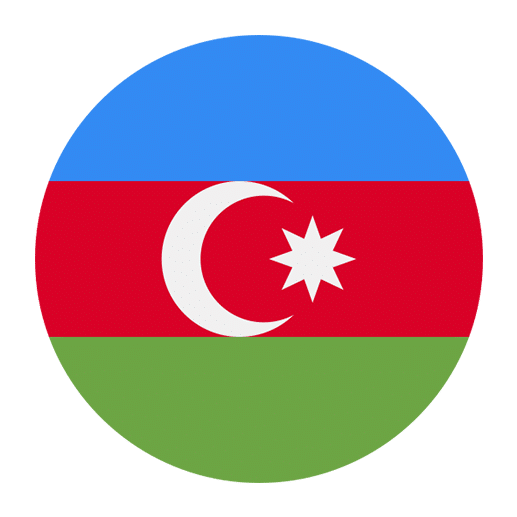In the journey of language learning, especially when diving into a language as rich and nuanced as Azerbaijani, learners often encounter words that appear similar but have very different meanings. This can be both intriguing and confusing. A perfect illustration of this is the pair of words “Köpük” and “Köpəklik”. While they might seem alike at first glance, they actually refer to entirely different concepts: one means “foam” and the other refers to “puppiness”. Let’s delve into these words to understand their uses, etymologies, and significance in the Azerbaijani language.
Understanding “Köpük”
The word “Köpük” in Azerbaijani translates to foam in English. Foam is a substance that is formed by trapping pockets of gas in a liquid or solid. This is a term commonly encountered in everyday life, from the foam on a freshly poured coffee to the bubbles in a bathtub.
Usage in Daily Language
“Köpük” is used in various contexts in Azerbaijani. Here are a few examples to illustrate its use:
1. **Coffee and Beverages**: “Qəhvə üzərində köpük var.” – “There is foam on the coffee.”
2. **Cleaning and Bathing**: “Uşaq köpüklü vannada oynayır.” – “The child is playing in the foamy bath.”
3. **Nature and Science**: “Dənizdəki dalğalar köpük yaradır.” – “The waves in the sea create foam.”
Etymology
The word “Köpük” has Turkic roots and is related to similar words in other Turkic languages. For example, in Turkish, “Köpük” also means foam. This shared etymology highlights the interconnectedness of the Turkic language family and provides insight into the historical and cultural exchanges that have shaped Azerbaijani.
Related Words and Phrases
1. **Köpüklü**: This adjective form of “Köpük” means “foamy” or “frothy”. Example: “Köpüklü qəhvə” – “Foamy coffee.”
2. **Köpüklənmək**: This verb means “to foam” or “to froth”. Example: “Süd köpüklənir” – “The milk is frothing.”
Exploring “Köpəklik”
On the other hand, “Köpəklik” refers to the state or quality of being a puppy, which we can translate to “puppiness” in English. This term is more abstract and less frequently used in comparison to “Köpük”, but it carries its own unique charm and significance.
Usage in Daily Language
“Köpəklik” is often used to describe the characteristics or behavior typical of puppies. Here are a few contexts where it might appear:
1. **Behavioral Description**: “Köpəklik dövründə itlər çox enerjili və oynaq olurlar.” – “During their puppyhood, dogs are very energetic and playful.”
2. **Metaphorical Use**: It can also be used metaphorically to describe someone who is acting like a puppy, i.e., being playful or naive. Example: “Onun köpəklik hərəkətləri hamını güldürdü.” – “His puppy-like actions made everyone laugh.”
Etymology
The word “Köpəklik” is derived from “köpək”, which means “puppy” or “dog”. The suffix “-lik” is used to form nouns indicating a state, condition, or quality. This suffix is common in many Turkic languages and is used in similar ways. Understanding the construction of “Köpəklik” can help language learners recognize and form other nouns in Azerbaijani.
Related Words and Phrases
1. **Köpək**: This noun means “puppy” or “dog”. Example: “Köpək çox sevimlidir.” – “The puppy is very cute.”
2. **Köpək olmaq**: This phrase means “to be a puppy” or “to exhibit puppy-like behavior”. Example: “O, həmişə köpək olmaq istəyir.” – “He always wants to be like a puppy.”
Comparative Analysis
While “Köpük” and “Köpəklik” might look and sound somewhat similar, they belong to entirely different semantic fields. One pertains to a physical substance (foam), and the other to a living creature’s state (puppiness). This distinction is crucial for language learners to grasp in order to use these words correctly and effectively in conversation.
Phonetic Similarities and Differences
Phonetically, both words share the initial “köp-” sound, which can be misleading for beginners. However, the endings “-ük” and “-əklik” are distinct. The “-ük” ending is indicative of a noun in Azerbaijani, often used for tangible objects or substances. In contrast, the “-əklik” ending signifies a state or condition, which is more abstract.
Contextual Clues
Understanding the context in which these words are used can also help learners distinguish between them. For example, if the conversation is about beverages, cleaning, or nature, “Köpük” is likely the correct term. On the other hand, if the discussion involves animals, behavior, or metaphorical expressions, “Köpəklik” is more appropriate.
Practical Tips for Language Learners
To master these and other similar-sounding words in Azerbaijani, consider the following tips:
1. **Contextual Learning**: Always pay attention to the context in which a word is used. This will help you understand its meaning and usage better.
2. **Practice with Native Speakers**: Engage in conversations with native Azerbaijani speakers. This real-world practice will expose you to the nuances and correct usage of words.
3. **Use Flashcards**: Create flashcards with the words and their meanings, along with example sentences. This visual aid can help reinforce your memory.
4. **Listen and Repeat**: Listen to Azerbaijani media, such as news, podcasts, or songs. Repeating what you hear can help you get accustomed to the pronunciation and usage of words.
5. **Study Etymology**: Understanding the roots and origins of words can provide insights into their meanings and relationships with other words.
Conclusion
Learning a new language is an enriching experience that opens doors to new cultures and perspectives. In Azerbaijani, words like “Köpük” and “Köpəklik” offer a glimpse into the language’s richness and complexity. By understanding their meanings, usage, and etymology, language learners can enhance their vocabulary and deepen their appreciation for Azerbaijani.
Remember, every language has its quirks and challenges, but with practice and dedication, you can master even the most perplexing pairs of words. So, keep exploring, keep learning, and enjoy the journey of discovering Azerbaijani!

